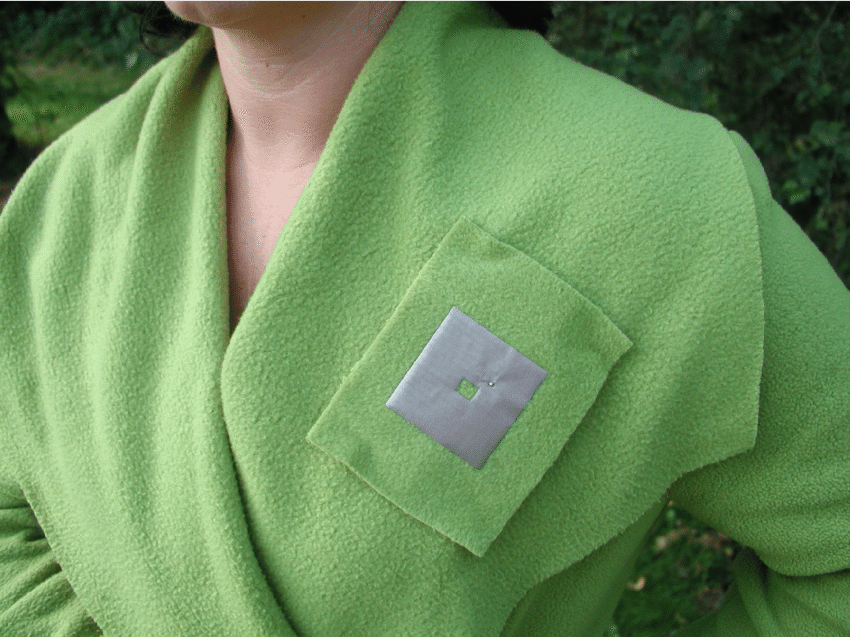Textile Antennas
In a world where technology is becoming increasingly integrated into our daily lives, wearable devices have taken center stage as like Textile Antennas. From fitness trackers to smartwatches, these devices have transformed the way we monitor our health, communicate, and interact with the digital world. One critical element making these wearables possible is the textile antenna—a remarkable innovation that seamlessly weaves connectivity into the very fabric of our clothing. In this blog, we’ll explore the fascinating world of textile antennas, their applications in wearable technology, and the exciting prospects they hold for the future.
The Rise of Wearable Technology
Wearable technology has witnessed a meteoric rise in recent years. Smartwatches, fitness trackers, and even smart clothing have become commonplace, providing users with real-time data, convenience, and an ever-growing array of functionalities. These devices rely heavily on wireless connectivity, which is where textile antennas come into play.
What are Textile Antennas?
Textile antennas are a subset of wearable technology, specifically designed to blend seamlessly with clothing and other textile-based materials. They function just like conventional antennas but with the added benefit of being flexible, lightweight, and comfortable to wear. Textile antennas can transmit and receive electromagnetic signals, making them ideal for wireless communication in wearable applications.
The Advantages of Textile Antennas:
- Comfort and Discreteness: Unlike traditional metallic antennas, textile antennas are soft and flexible, ensuring wearer comfort. They can be integrated into clothing without causing discomfort or hindrance.
- Aesthetics: Textile antennas are inconspicuous and can be designed to match the fabric’s pattern or color, making them visually appealing and stylish.
- Durability: These antennas are designed to withstand the rigors of daily wear and washing, ensuring they remain functional over an extended period.
- Customization: Textile antennas can be tailored to specific shapes and sizes, allowing for a high degree of customization in wearable design.
Applications of Textile Antennas in Wearable Technology
Textile antennas have found applications in a wide range of wearable devices. Here are some notable examples:
- Smart Clothing: Textile antennas are integrated into smart clothing items like jackets, shirts, and sports bras to enable real-time monitoring of vital signs such as heart rate, body temperature, and respiration rate.
- Fitness Trackers: Fitness bands and trackers use textile antennas to connect with smartphones or other devices, allowing wearers to track their activity levels, sleep patterns, and receive notifications.
- Medical Wearables: Medical wearables, including ECG monitors and glucose monitoring systems, utilize textile antennas to transmit health data securely to healthcare providers, ensuring timely intervention if necessary.
- Augmented Reality (AR) and Virtual Reality (VR) Headsets: Some AR and VR headsets incorporate textile antennas for wireless connectivity, providing a seamless and immersive experience.
- Communication Devices: Hands-free communication devices like smart glasses and headsets utilize textile antennas to maintain connectivity, enabling voice calls and data transfer.
- Emergency Wearables: Wearable devices with textile antennas can serve as personal safety devices, allowing wearers to send distress signals and their location in case of emergencies.
Challenges in Textile Antenna Design
While textile antennas offer numerous advantages, they also present unique challenges:
- Performance: Achieving the same level of performance as traditional metallic antennas in terms of signal strength and range can be a challenge due to the textile’s characteristics.
- Integration: Ensuring that the textile antenna seamlessly integrates with the clothing material, without compromising its appearance or comfort, requires careful design.
- Washability: Textile antennas must withstand repeated washing without degradation in performance.
Future Trends and Innovations
The future of textile antennas in wearable technology is promising:
- Multi-Band Antennas: Developing textile antennas that can operate across multiple frequency bands to support a wide range of wireless technologies.
- 5G Integration: As 5G networks become more widespread, textile antennas will play a vital role in the deployment of high-speed, low-latency connectivity in wearables.
- Energy Harvesting: Incorporating energy-harvesting capabilities into textile antennas, allowing wearables to generate power from the environment, and reducing the need for frequent charging.
- Smart Fabrics: Advancements in conductive and responsive materials will lead to the development of even smarter textiles, enhancing the functionality of wearable devices.
- Wearable IoT Networks: Textile antennas will enable the creation of interconnected wearable networks, allowing devices to communicate with each other and with the wider IoT ecosystem.
Conclusion
Textile antennas represent a significant milestone in the evolution of wearable technology. Their ability to seamlessly blend connectivity into clothing and other textiles has paved the way for more comfortable, stylish, and functional wearables. As research and innovation in this field continue to advance, we can expect even more exciting applications and breakthroughs, ultimately leading to a future where wearable technology is an integral part of our daily lives, enhancing our well-being and connectivity in ways we can only imagine. Textile antennas are not just a technological marvel; they are the threads that connect us to the future
Source
- https://connectivity.esa.int/projects/textile-antennas
- https://www.techtarget.com/searchmobilecomputing/definition/wearable-technology#:~:text= Wearable%20technology%20is%20any%20kind,clothing%20or%20elements%20of%20clothing.
- https://www.ijsr.net/archive/v5i5/NOV163530.pdf
Image Source

